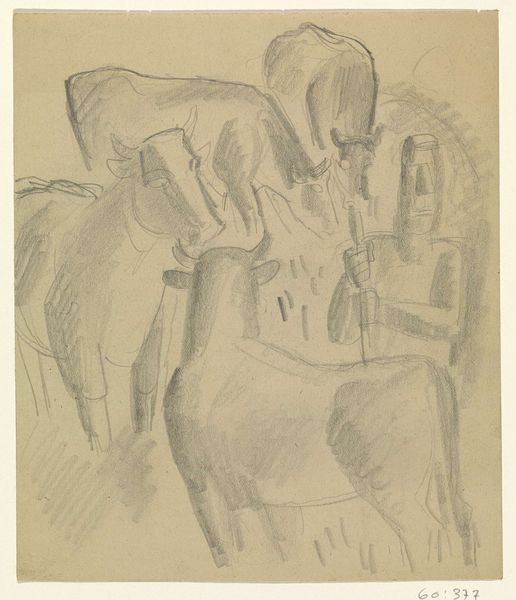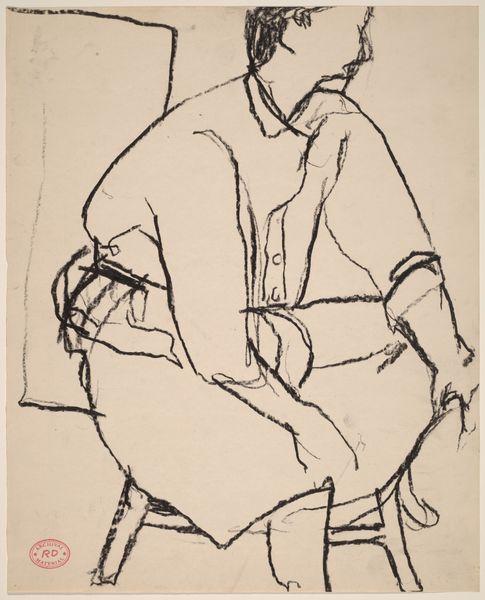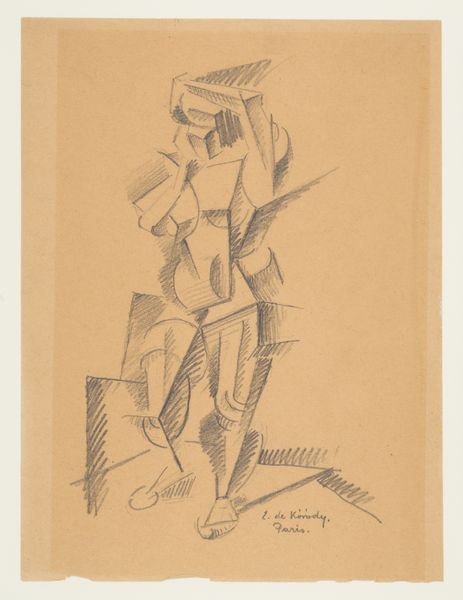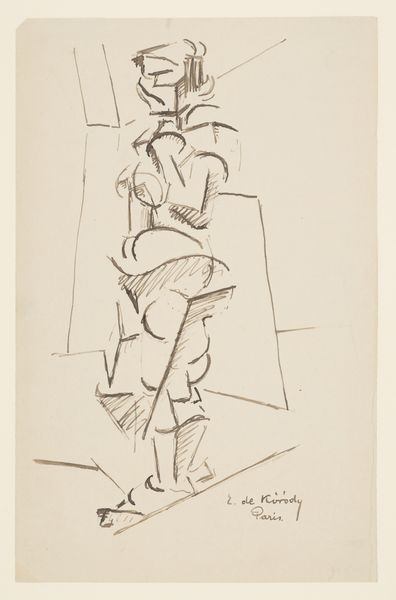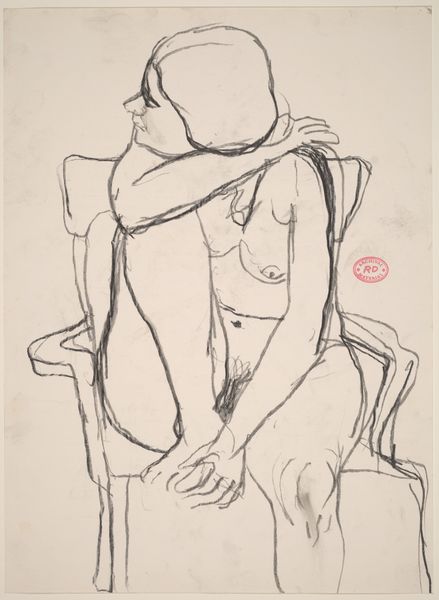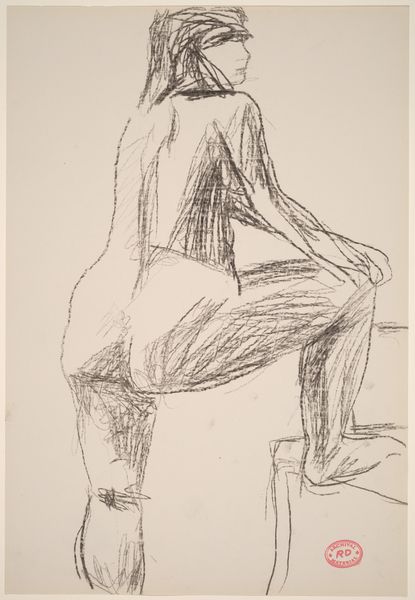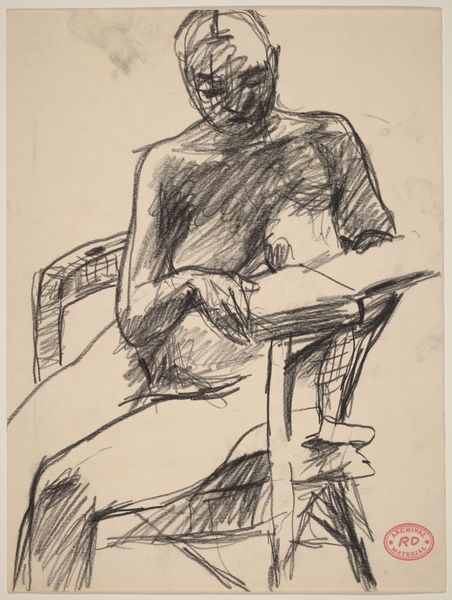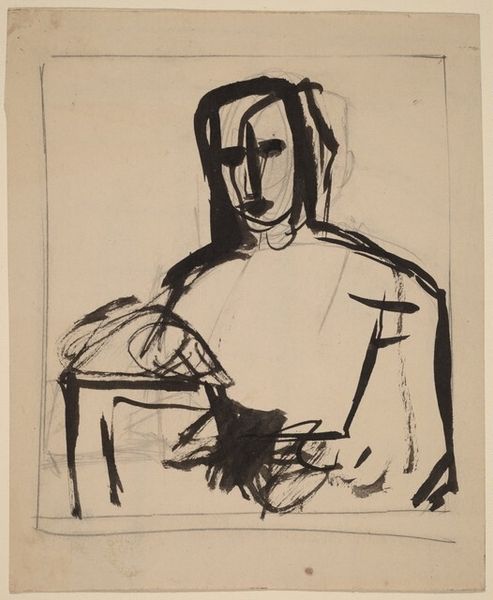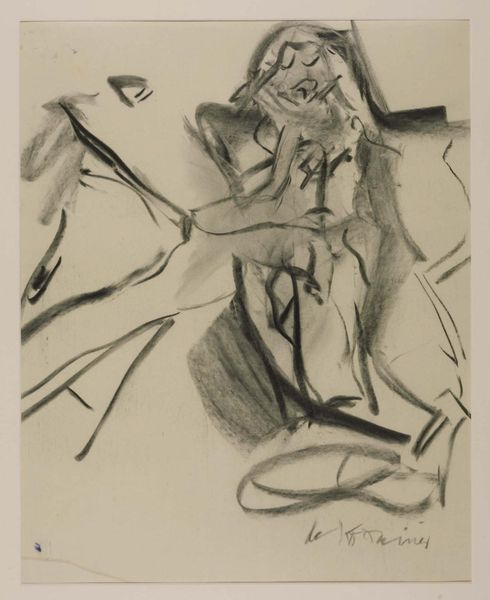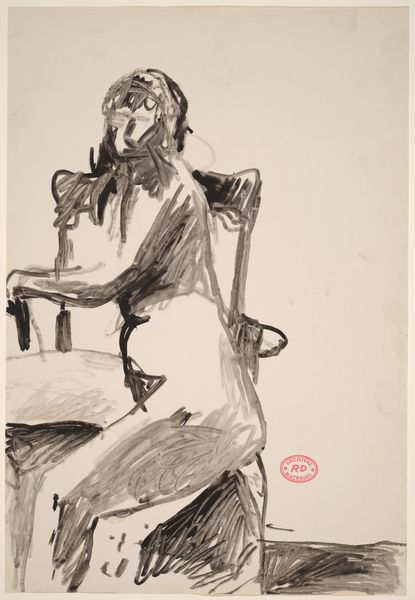
Dimensions: 10 × 7 7/8 in. (25.4 × 20 cm)
Copyright: Public Domain
Curator: Allow me to introduce Elemér de Kórödy's "Seated Figure," a drawing from 1913. It is currently held here at the Metropolitan Museum of Art. Editor: My initial impression is one of fragmented solidity. The artist has reduced the human form to a series of geometric shapes, creating a sense of volume and weight even in this light pencil work. It has an underlying structure, but it also feels unresolved, like a sketch abandoned mid-process. Curator: It's important to remember that Kórödy was working within a broader context of artistic experimentation in Paris at the time. Cubism, with its dismantling of perspective and representation, was heavily influencing artists' portrayal of identity and societal norms. This piece almost looks like a critical commentary of the rigid gender constructs of the time by dissecting the figure in such a calculated way. Editor: I appreciate your interpretation; however, the intrinsic qualities of the art are not entirely to deliver a clear commentary about the gender constructs, and while your idea can be true, I find the success in this particular image as a success in how the piece deconstructs volume with basic form. Observe how Kórödy uses lines to define the contours of each block and form with light pencil work. Curator: It's a matter of what lenses we use to interpret the message, isn't it? I do acknowledge how interesting and successful is the distribution of lines to deliver each section of the body. I suggest the artist had many personal experimentations, this specific work almost feels like a storyboard or an experiment from a personal sketchbook. This adds another layer for identity as he probably drew himself. Editor: Perhaps you are correct to say so. He left this experiment that is filled with technique and substance, so whoever sees it can decode it in an intrinsic or extrinsic way as a study. I'm delighted with the structure the author gives the human figure in the composition. Curator: And I with its reflections within art and broader issues that affect our human identity. Thank you for your time!
Comments
No comments
Be the first to comment and join the conversation on the ultimate creative platform.
